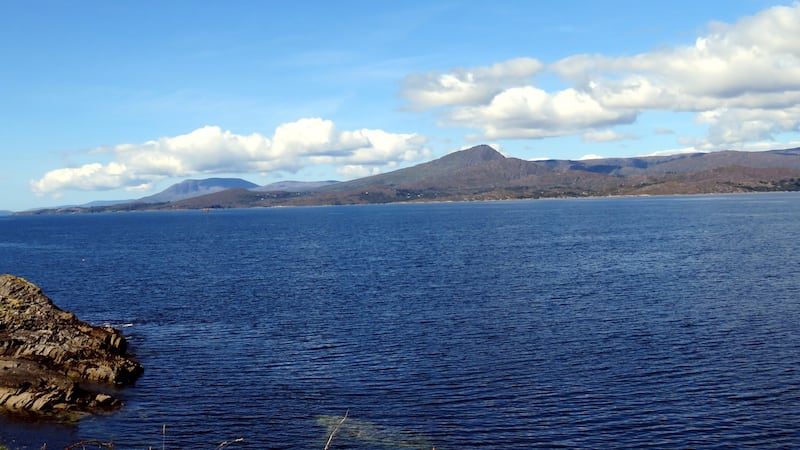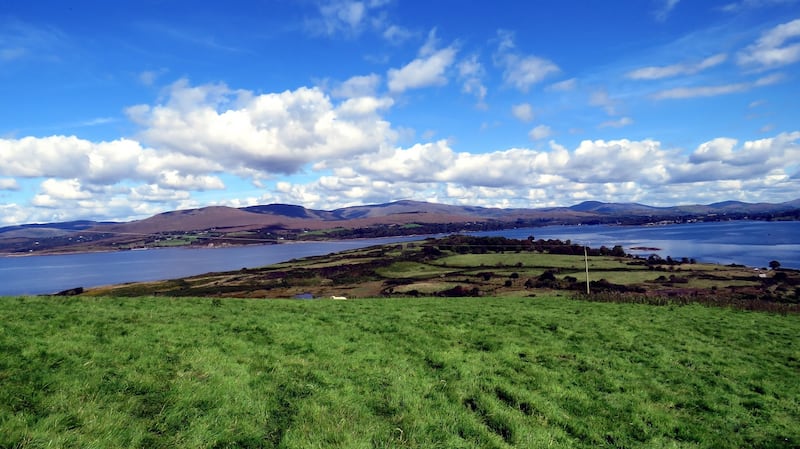Most Irish offshore islands are known for a distinctive feature, be it dramatic topography or archaeological remains. Whiddy Island (Oileán Faoide) has the unfortunate distinction of being known for its oil terminal; the construction of which was controversial; and for the Betelgeuse disaster in 1979 when a tanker exploded while being unloaded, claiming the lives of 50 people.
With its highest point being a mere 50m, it is lacking in dramatic cliffs and the deep water around it has prevented the development of sandy beaches. As a result, even to a passionate island lover such as myself, Whiddy was low on the bucket list.
Having to pay a visit to Bantry during the summer, I took the opportunity to visit Whiddy. A ferry trip to an island, however short, always creates a sense of anticipation and this one was enhanced by being undertaken on a calm sunny day in which the scattered cumulus clouds were reflected in the still waters and the distinctive mountains of the Caha range, Hungry Hill and Sugar Loaf, were etched sharply against the clear skies over the Beara Peninsula on the western side of Bantry Bay.

Stepping ashore, that special island atmosphere enveloped me and I set off into the silence down a delightful narrow road lined with the autumnal delights of large drifts of Montbretia and purple loosestrife.
A short distance down the road, there is a stile on your right which brings you on to a track that runs across Trawnahaha Hill and on to the road that runs down to Kilmore Lakes and Bealtonnta Strand, a shingle beach which looks out on to the Sheep’s Head Peninsula.
This shore was a valuable source of food in the 19th century with mussels and shellfish supplementing the diet of the 790 that inhabited the island in 1841. A number of families lived on the strand and farmed the strip of grass at the top of the beach, thus avoiding having to pay rent to the landlord.
From Kilmore, the track goes off road again through the island graveyard which is situated in the grounds of a sixth century church, the ruins of which are still extant. Only the O’Sullivans, Goggins and Moores were buried here. The other families on the island were buried in Bantry.
Emerging on to a roadway again, I turned left bringing me to the gates of the oil terminal where the great grey tanks hold much of the country’s oil reserves. The fanciful thought struck me that in 2,000 years’ time their remnants will be an archaeological curiosity.
I then headed north to one of the three batteries that were constructed after the attempted French invasion of 1796. There is a path to the central one which is on the highest point on the island (50m) and gives an excellent view of the island and the uplands bordering Bantry Bay.
Back in the pub while waiting for the ferry, I reflected that this peaceful place, with its stunning scenery on the surrounding mainland should be high on every island-lovers “must visit” list.

Whiddy Island, Bantry Bay, west Cork
- Map: Ordnance Survey, Discovery Series, Sheet 85
- Start & Finish: The Pier in Bantry Town Harbour. Grid Reference: 990 486
- How to get there: Bantry is on the N71 at the head of Bantry Bay. The ferry for the island leaves the pier at regular intervals. whiddyferry.com, 086-8626734
- Time: 3 hours
- Distance: 10km
- Total Ascent: 80m
- Suitability: Route is easy
- Food & Accommodation: Bantry. The pub on the island is open during the summer months











